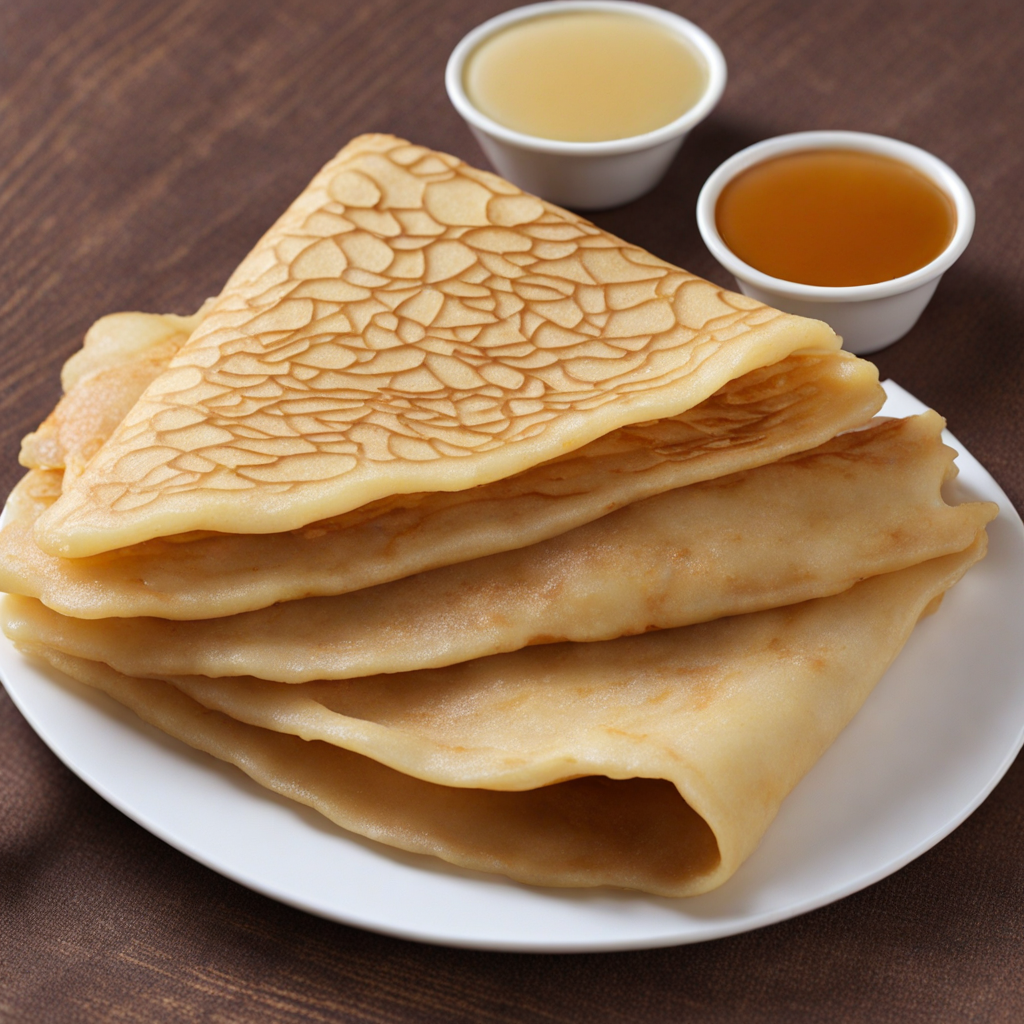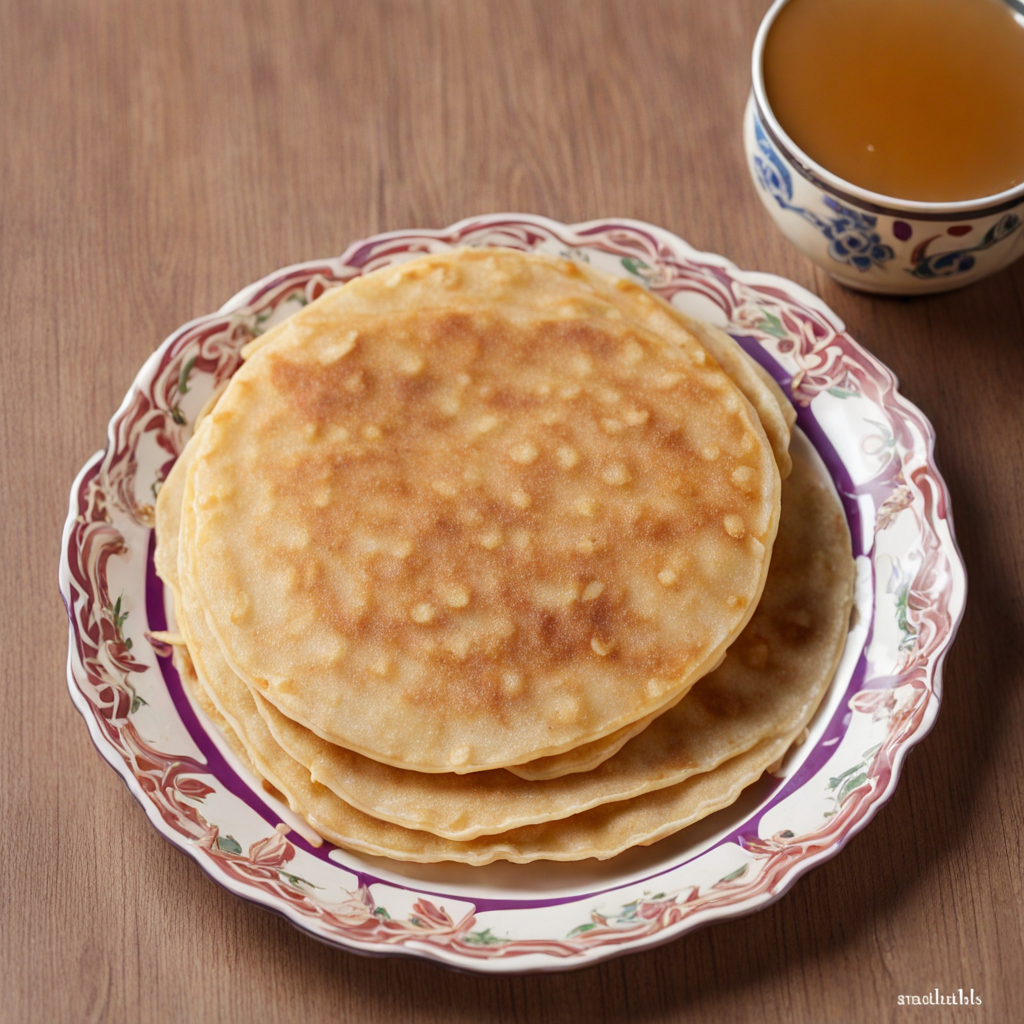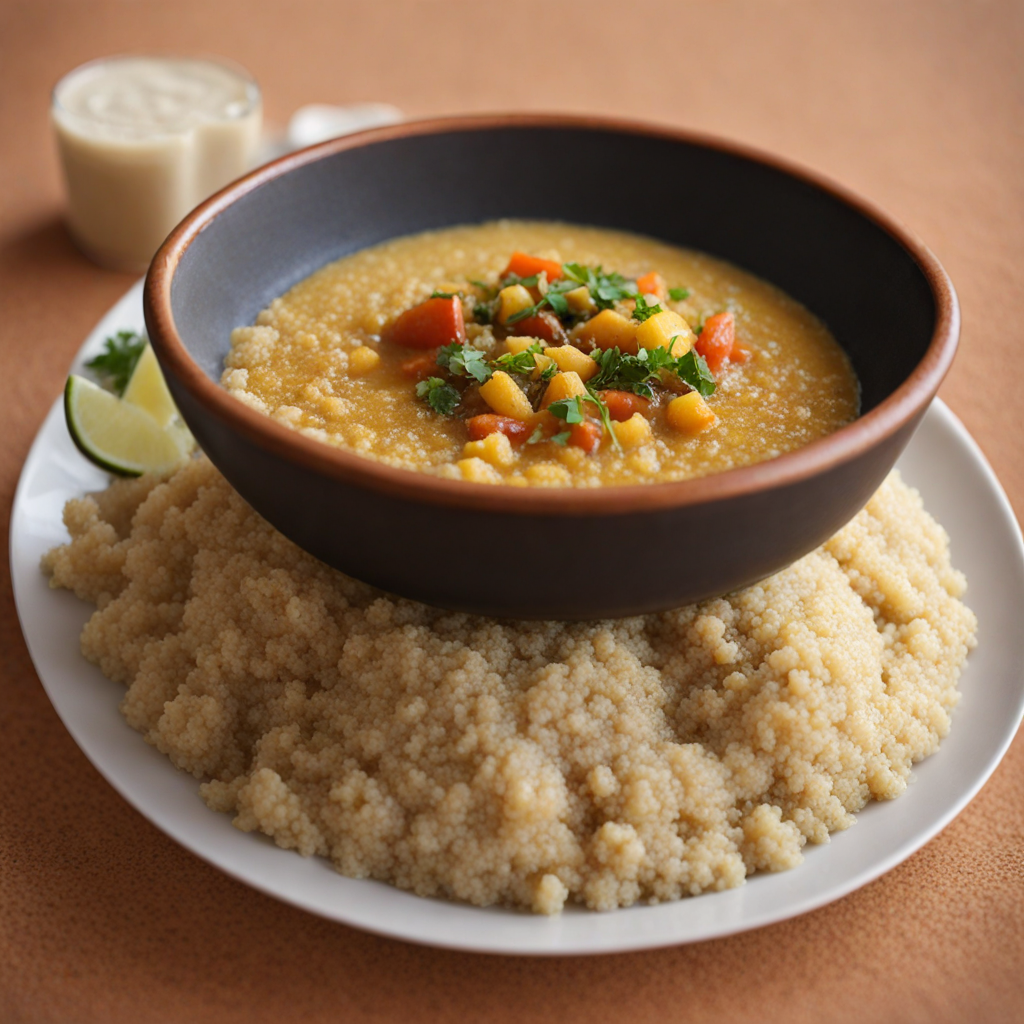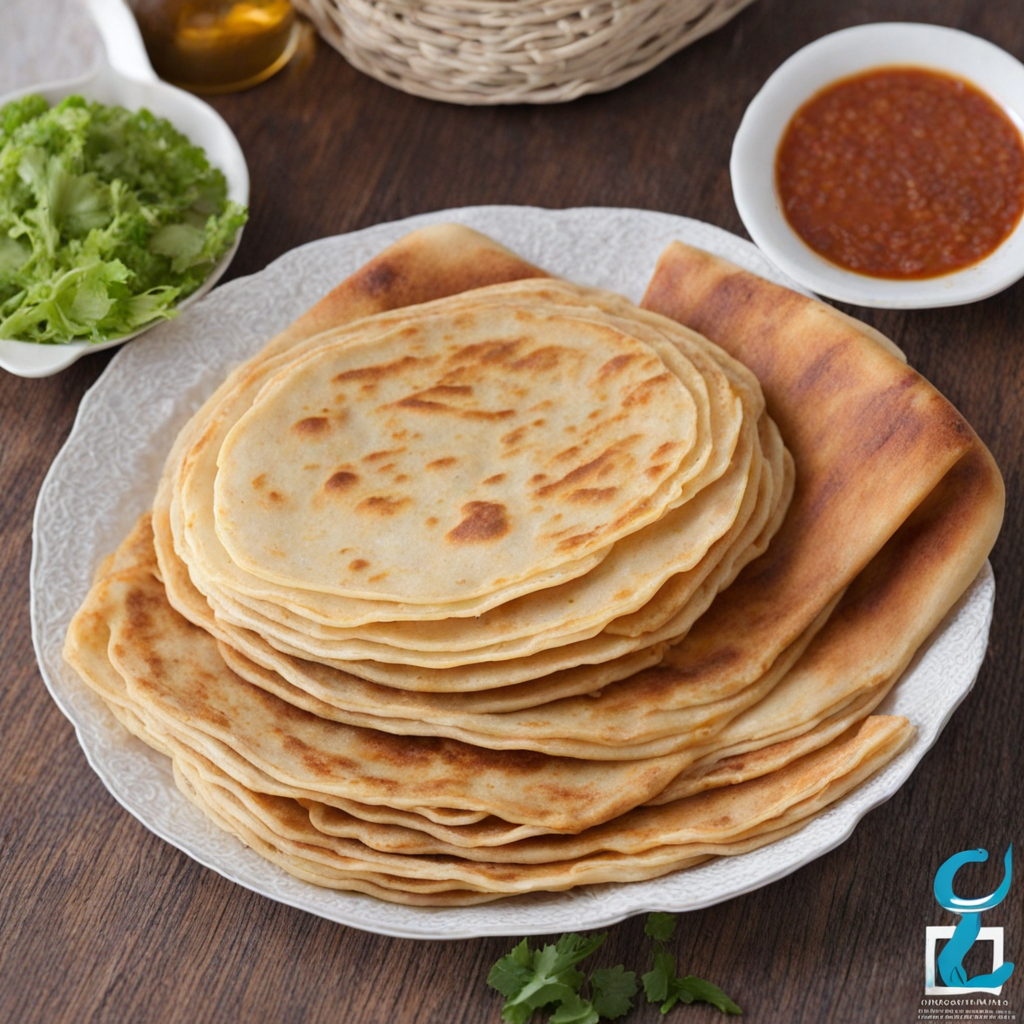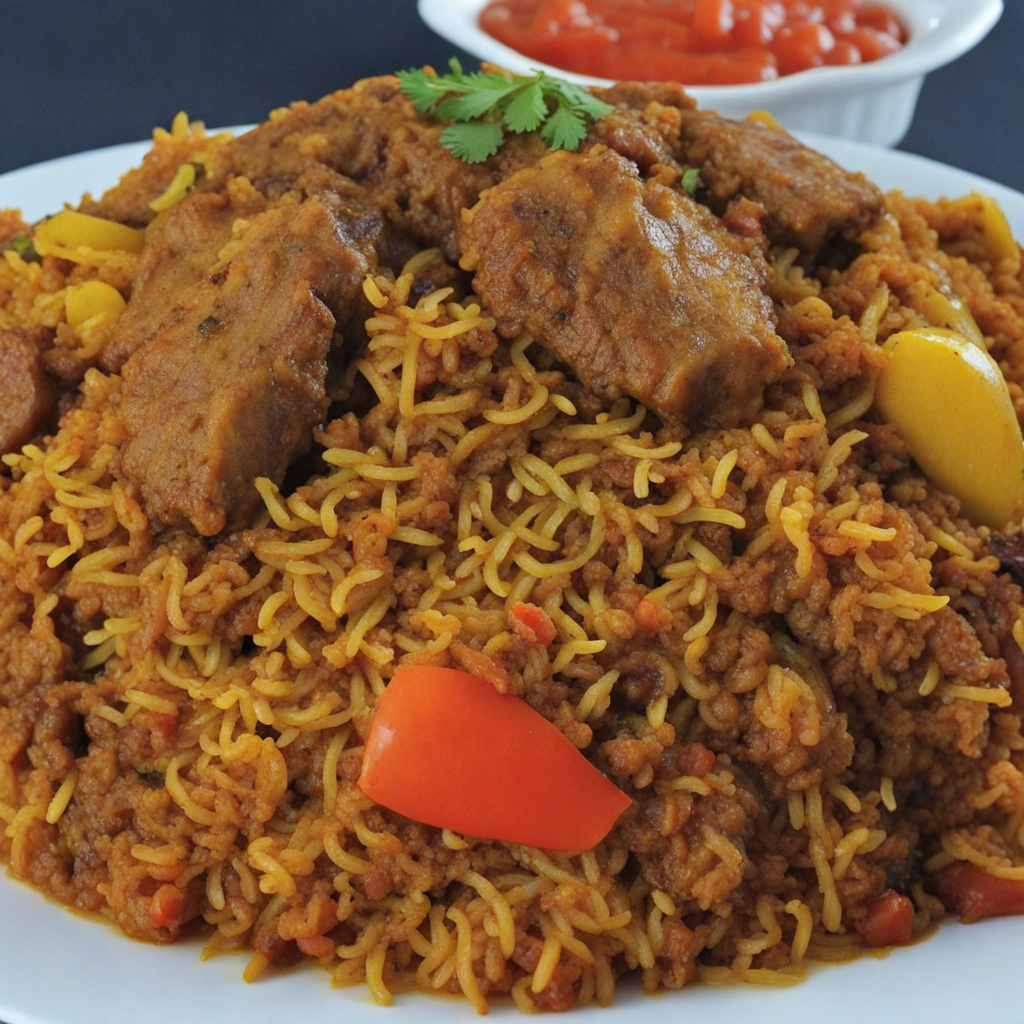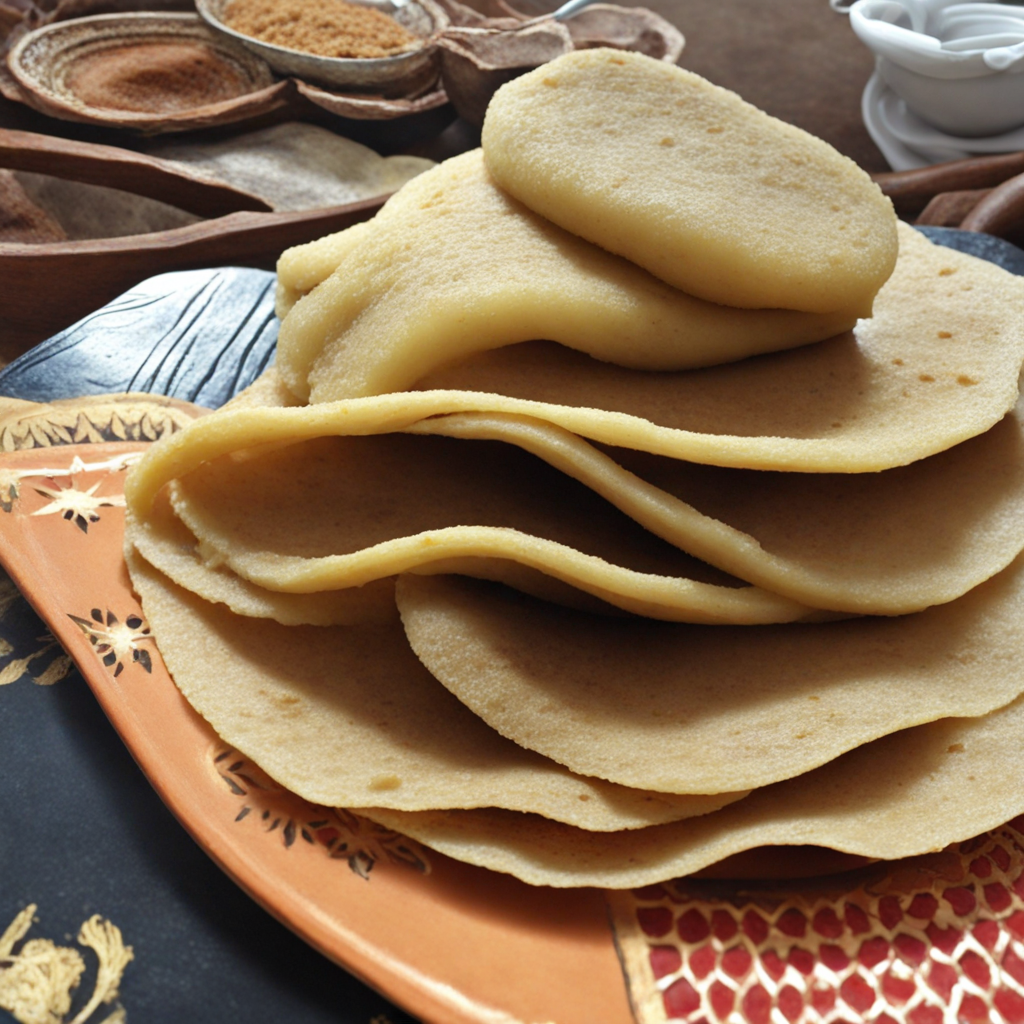Malawah
Malawah is a traditional Somali dish that embodies a delightful balance of textures and flavors. This soft, thin flatbread is made from a simple mixture of flour, water, and a pinch of salt, but its magic lies in the way it is cooked. Each piece is gently pan-fried until golden brown, resulting in a warm, flaky exterior that gives way to a tender, almost chewy interior. The cooking process often involves the addition of ghee or oil, which not only enriches the flavor but also creates a beautiful, appetizing sheen on the surface of the bread, making it irresistible to the eye. What sets Malawah apart is its versatility. It can be enjoyed in various ways, either as a standalone dish or as an accompaniment to savory stews and curries. Traditionally, it is served with fragrant Somali dishes such as suqaar (a spiced meat dish) or lentil stew, allowing it to absorb the rich flavors of the sauces. Additionally, some enjoy Malawah with sweet toppings, like honey or sugar, for breakfast or as a snack, showcasing its adaptability to both savory and sweet palates. The experience of eating Malawah is one that engages all the senses. The aroma of the bread as it cooks fills the kitchen, inviting everyone to gather around the table. The first bite offers a delightful crunch followed by the soft, warm inside that melts in your mouth. Whether you dip it into a flavorful sauce or enjoy it plain, Malawah is more than just food; it is a symbol of Somali hospitality and tradition, inviting you to savor the rich culinary heritage of Somalia.
How It Became This Dish
The History of ملواح (Malawah) in Somalia Malawah, a traditional Somali dish, is a type of flatbread that holds a special place in the culinary landscape of Somalia. Its origins, cultural significance, and evolution over time reflect the rich tapestry of Somali history, influenced by migration, trade, and the blending of culinary practices. #### Origins of Malawah The roots of malawah can be traced back to the ancient trade routes that connected the Horn of Africa with the Arabian Peninsula and beyond. The Somali people, who have inhabited the region for thousands of years, developed a cuisine that was shaped by their nomadic lifestyle, availability of local ingredients, and interactions with neighboring cultures. The term "malawah" itself is derived from the Arabic word "malawach," which signifies the flat, layered bread found in various forms across the Middle East and North Africa. This linguistic connection highlights the historical exchanges between Somali and Arab cultures, particularly through trade and the spread of Islam in the region, which began in the 7th century. As Somali merchants traveled to and from the Arabian Peninsula, they not only exchanged goods but also culinary practices, introducing the concept of layered flatbreads to the Somali table. #### Cultural Significance Malawah is more than just food; it is a symbol of hospitality and community in Somali culture. It is often served during special occasions, such as weddings, religious festivities, and family gatherings. The preparation of malawah can be a communal activity, where family members come together to mix the dough, roll it out, and cook it over a hot griddle. This practice fosters bonds among family and friends, making it a cherished tradition. In Somali society, food is an essential component of cultural identity. Malawah is typically enjoyed with various accompaniments, including stews, sauces, and meats, reflecting the Somali love for communal eating. The bread is used to scoop up food, embodying the communal spirit of sharing and togetherness. It is not uncommon for guests to be offered malawah upon arrival at a Somali home, signifying welcome and generosity. Moreover, malawah has deep religious significance, particularly during the month of Ramadan. Breaking the fast with malawah, often paired with dates and sweet beverages, is a cherished tradition. It reinforces the connection between food and spirituality, as families gather to share meals and participate in prayers. #### Development Over Time As Somalia has undergone various social and political changes, so too has the preparation and consumption of malawah. In the late 19th and early 20th centuries, Somalia experienced significant turmoil due to colonialism and conflict. These disruptions impacted traditional foodways, leading to adaptations in ingredients and cooking methods. During the colonial period, the introduction of new agricultural practices and crops influenced the Somali diet. Wheat flour, which was less common in traditional Somali cooking, became more widely available due to European agricultural policies. This shift led to the incorporation of wheat flour into the malawah recipe, making it a staple food item that could be prepared quickly and easily. The post-independence era saw a resurgence of interest in Somali culture, including its culinary traditions. With the rise of nationalism in the 1960s and 1970s, there was a concerted effort to celebrate and promote Somali identity, which included a revival of traditional foods like malawah. This period also saw the emergence of new culinary influences, as diaspora communities began to share their experiences and adaptations of Somali cuisine, leading to a fusion of flavors and techniques. In contemporary Somalia, malawah continues to be a beloved staple, enjoyed in homes and restaurants alike. The dish has adapted to modern tastes while retaining its traditional roots. Variations of malawah have emerged, such as those made with different flours or flavored with spices, reflecting the evolving nature of Somali cuisine. For instance, some cooks may incorporate cardamom or cinnamon into the dough, adding a unique twist that appeals to both traditionalists and modern palates. #### Malawah in the Diaspora The Somali diaspora, which has grown significantly due to civil conflict and economic migration, has played a crucial role in the dissemination of malawah beyond Somalia’s borders. Somali communities in countries like the United States, Canada, the United Kingdom, and Australia have established restaurants and food markets that serve traditional dishes, including malawah. This globalization of Somali cuisine has introduced malawah to a wider audience, allowing for cross-cultural culinary exchanges. In these diaspora communities, malawah has become a symbol of home and cultural heritage. It is often made during festive occasions, family gatherings, and cultural celebrations, helping to maintain a connection to Somali identity despite geographical distances. Cooking malawah at home has become a way for Somali families to pass down traditions to younger generations, ensuring that the cultural significance of the dish is preserved. #### Conclusion Malawah is not merely a flatbread; it is a reflection of Somalia's rich history, cultural values, and resilience. From its origins along ancient trade routes to its role in modern Somali society, malawah embodies the spirit of hospitality, community, and identity. As it continues to evolve, adapting to new influences while remaining deeply rooted in tradition, malawah stands as a testament to the enduring power of food in bringing people together and celebrating cultural heritage. Whether enjoyed at a family gathering in Somalia or a restaurant in a foreign land, malawah remains a beloved dish that nourishes both body and soul.
You may like
Discover local flavors from Somalia


